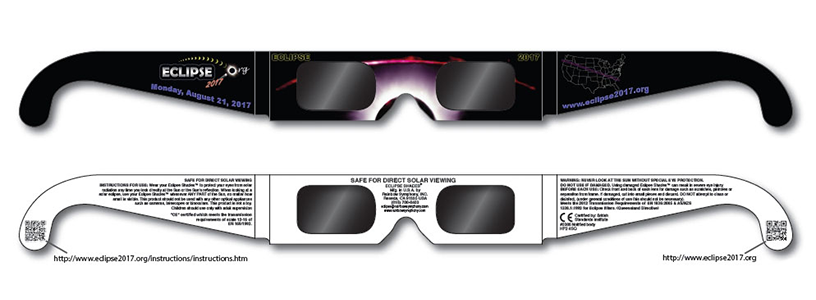Eclipse of the Sun Safety Tips for Viewing
Posted by M. Sparks on Aug 19th 2017
Tips for your safety during Monday’s total Eclipse of the Sun
Monday August 21, 2017, all of North America will experience an eclipse of the sun. It seems that most everyone on the North American continent will be anxious to see this for marvel and it is understood that those anxious to witness it themselves are most likely wanting to view the full or partial eclipse safely. As always safety should be a top priority when planning your viewing of the eclipse.
Here are a few top tips to keep in mind:
- Don’t look directly at the sun unless you are wearing “eclipse glasses”
- Normal sunglasses are not able to provide enough eye protection
- Do not use a smartphone lens or binoculars to view the eclipse they are not able to provide any protection for your eyes either.
The eclipse that will occur on Monday will be the first one that will be visible coast to coast in nearly 100 years. The last eclipse to sweep across the United States was in 1918.
According to NASA, the center line “path of totality” which will be roughly 70 miles wide and will stretch from Salem, Oregon to Charleston, South Carolina. In this path the moon will completely block the sun and the earth will become dark with the sun’s corona shimmering in the blackened sky. The eclipse will last approximately 2 minutes and 40 seconds. Observers outside this path will still see a partial solar eclipse where the moon covers part of the sun’s disk. With that being said everyone in the contiguous United States including parts of South America, Africa and Europe will see at least a partial solar eclipse while those lucky enough to be within the 70 mile wide path which covers portions of 14 states will be able to view the total eclipse.

It is OK to Watch a Total Eclipse, But Only if You Do it Safely!
How Do You Protect Your Eyes?
- The only safe was to look directly as the uneclipsed or partially eclipsed sun is by wearing special purpose solar filters, such as “eclipse glasses” or by using a handheld solar viewer.
- Do NOT look directly at the sun during the eclipse unless you are wearing eclipse glasses or using a hand held solar viewer that meet ISO 12312-2.
- Do NOT look at the uneclipsed or partially eclipsed sun through an unfiltered camera, telescope, binoculars or other optical device. The suns concentrated solar rays could damage the filter and enter your eyes causing serious damage.
- Remember that regular sun glasses do not provide enough protection for your eyes. Regular sunglasses transmit thousands of times too much sunlight and cannot properly protect your eyes during an eclipse of the sun.
- Supervise children who are using solar filters such as eclipse glasses.
- If you normally wear sunglasses, keep them on and put your eclipse glasses over them or hold the hand held solar viewer in front of them.
If you are within the path of totality, remove your solar filter ONLY when the moon completely covers the sun’s face and it suddenly gets dark. Experience totality, then, as soon as the bright sun begins to reappear, replace your solar viewer to glance at the remaining partial phases.
This blog was written to inform you about the importance of taking the proper precautions to protect your eyes as well as your children’s eyes from the sun. There are many ways to safely watch and enjoy this once in a lifetime event in our country, the total eclipse of the sun. First Aid and Safety Online hope that you enjoy the marvel of nature and that you enjoy it safely.
